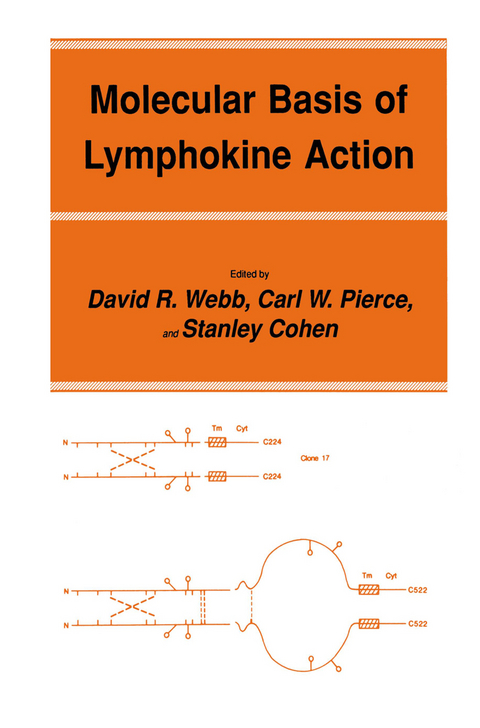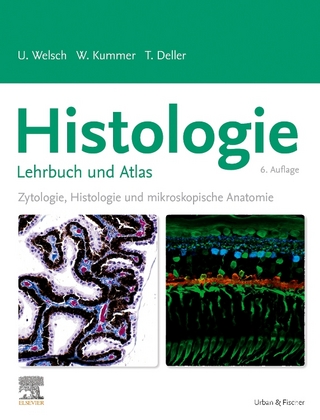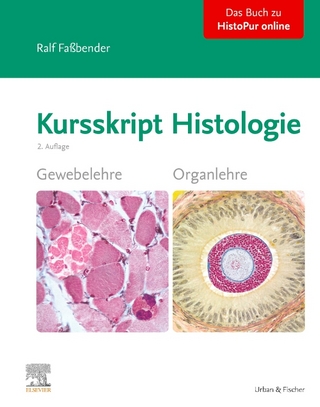
Molecular Basis of Lymphokine Action
Humana Press Inc. (Verlag)
978-0-89603-139-5 (ISBN)
Keynote Address.- Tumor Growth Factors.- Suppressor Factors.- Suppressor T Cell Receptor and Functional Molecules.- Role of Glycosylation Inhibiting Factor (GIF), A Phospholipase Inhibitory Protein, In the Generation of Antigen-Specific Suppressor T Cells.- Characterization of GAT-Specific Suppressor Factors and Comparison to Other Antigen-Specific Factors.- Soluble Immune Response Suppressor (SIRS) Mediated Inhibition of Cell Division.- Differentiation and Proliferation of CD8+ Suppressor T Lymphocytes.- Interleukin 1.- Molecular Studies on Murine Interleukin 1.- Multiple Biological Activities of Human Interleukin-1.- A Membrane Form of IL-1-Identification and Control of Expression.- Characterization of Interleukin-1 Receptors.- T Cell Interleukin 1.- B Cell Growth and Differentiation Factors.- Molecular Structure and Immunological Function of Human B Cell Differentiation Factor (BSF2).- Current Studies Examining Regulation of the Human B Cell Cycle.- Two Types of Mouse Helper T Cell Clone: Differences in B Cell Help and Lymphokine Synthesis.- Interleukin 2.- Two Step Activation of the Interleukin-2 Autocrine Loop May Be Involved in ATL Development.- The Human High Affinity Interleukin-2 Receptor.- Regulation of IL2 and Related Genes at the mRNA Level.- Effects of Interleukin-2 to Promote Prothymocyte and Early Thymocyte Proliferation and Differentiation and to Increase Cyclic GMP Levels.- Biological Significance of Interleukin-2 Receptor-Associated Molecules.- Identification of a Novel Interleukin-2 Receptor Subunit.- Effector Factors.- In Vivo Antitumor Activities of Tumor Necrosis Factor-Alpha.- Life After IL2.- Regulatory Polypeptides in the Lympho-Hemopoietic System.- Cachectin/TNF: A Mediator of Lethal Endotoxemia.- The Molecular Complex of Macrophage Migration Inhibitory Activity (MIF) and Its Role in Inflammatory Reactions.- Hematopoietic Growth Factors.- Molecular Biology of Interleukin-3.- The Molecular and Biological Properties of the Human and Murine Members of the CSF-1 Family.- Isolation and Characterization of Mouse and Human cDNA Clones Encoding IL-4 and IgA-Enhancing Factor/Eosinophil CSF (IL-5).- Molecular Cloning and Characterization of the Human Gene for Interleukin-3 (IL-3).- Structure-Function Studies of Lymphokines by Total Chemical Synthesis.- Clincal Uses of Lymphokines.- Cytokines in Metabolic Bone Disease.- Lymphokine Production in Autoimmunity: Usefulness of mRNA Assays.- Interleukin-2 Receptor Directed Immunosuppressive Therapy.- An Improved Method for the Generation of Human Activated Killer Cells.- Growth and Differentiation Factors for Human Metachromatically Staining Cells.- Banquet Address.- Lymphokine Research and the Biology of Immunologic Diseases.- Workshop Summaries.- Interleukin 1.- Hemtapoietic Growth Factors.- Suppressor/Effector Factors.- Clinical Uses of Lymphokines.- Interleukin 2.- Lymphokines Activating Cells for Killer Functions.- B Cell Growth Factors.
| Reihe/Serie | Experimental Biology and Medicine ; 18 |
|---|---|
| Zusatzinfo | XXVIII, 482 p. |
| Verlagsort | Totowa, NJ |
| Sprache | englisch |
| Maße | 155 x 235 mm |
| Themenwelt | Studium ► 1. Studienabschnitt (Vorklinik) ► Histologie / Embryologie |
| Studium ► Querschnittsbereiche ► Infektiologie / Immunologie | |
| Naturwissenschaften ► Biologie ► Genetik / Molekularbiologie | |
| Naturwissenschaften ► Biologie ► Zellbiologie | |
| ISBN-10 | 0-89603-139-X / 089603139X |
| ISBN-13 | 978-0-89603-139-5 / 9780896031395 |
| Zustand | Neuware |
| Haben Sie eine Frage zum Produkt? |
aus dem Bereich


